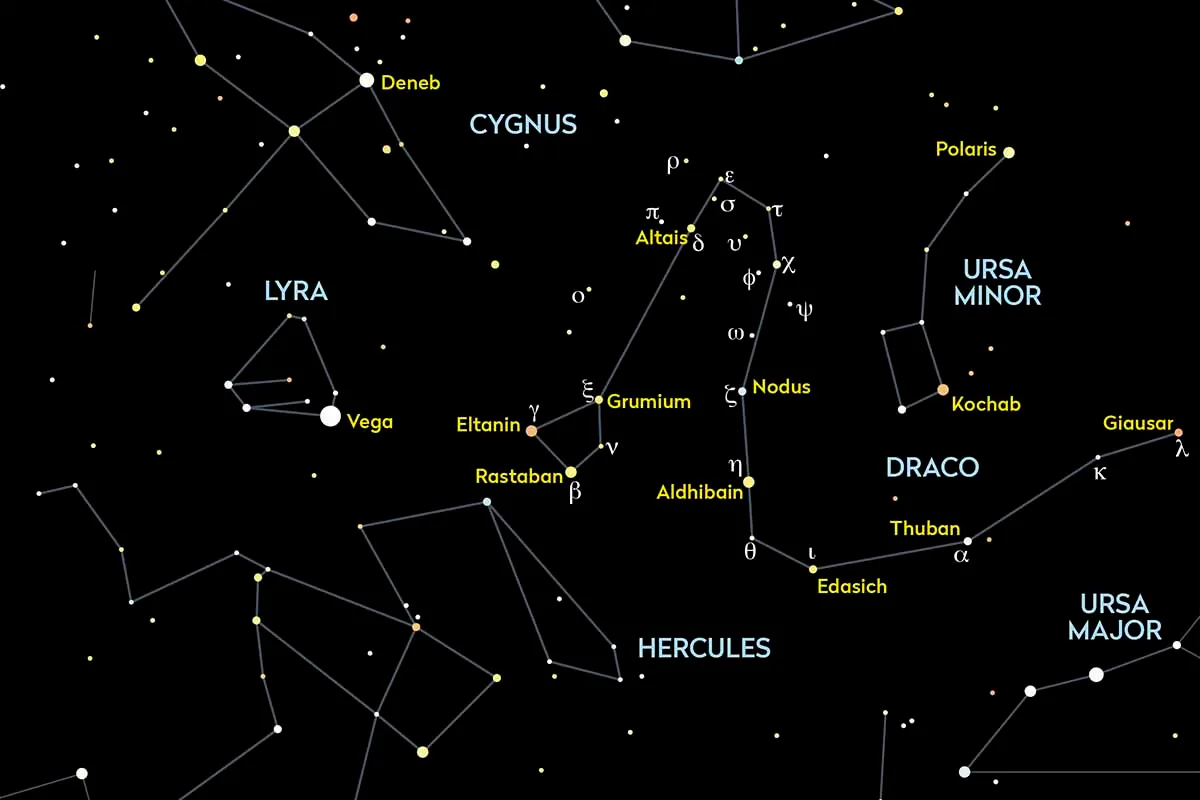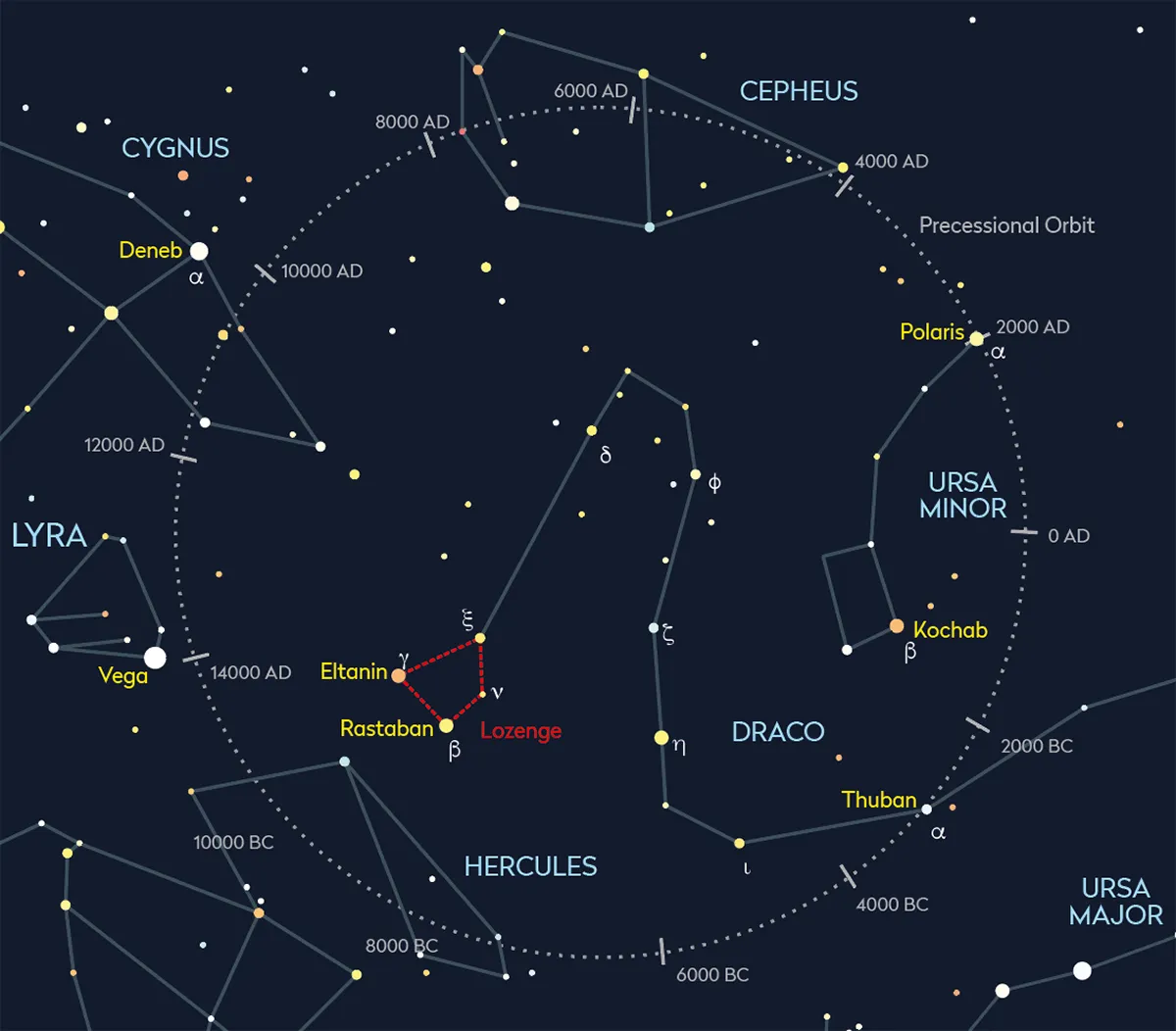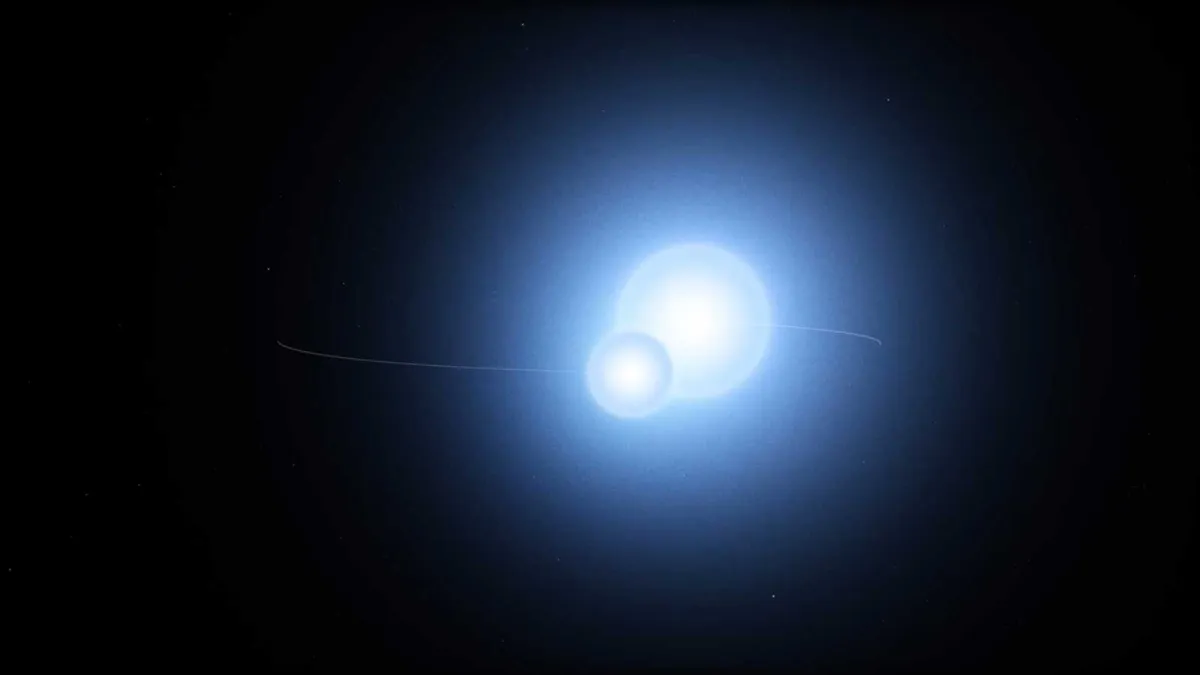Polaris currently carries the mantle of being the North Star, or Pole Star, but between the 4th to 2nd millennium BC, it was Thuban that marked the position of the North Star.
Thuban was the North Star most demonstrably between 3,942–1,793 BC. It will regain this important position in the sky, but not until 20,346 AD.

Thuban, the alpha star of Draco, the Dragon, shines at mag. +3.7, making it a medium brightness star erring on the dimmer side.
In terms of Draco, it’s easily outshone by some of the other stars that form this long curving constellation, which appears to wrap around Ursa Minor, the Little Bear, and of course the current Pole Star, Polaris (Alpha (α) Ursae Minoris)
Eltanin (Gamma (γ) Draconis) is 3.7 times brighter than Thuban at mag. +2.2.

Why Thuban was the North Star, but isn't now
Thuban’s elevated status comes from the fact that Earth’s rotational axis wobbles over time.
It takes 26,000 years for the axis to complete one orbital wobble and as it does so, the star which carries that important celestial position – the marker for the North Celestial Pole – changes.
Thus, Thuban was once the North Star, but is no longer. For the time being, anyway.

Thuban quick facts
Thuban is a white giant star and a spectroscopic binary, with a spectral class of AOIII; in fact, it’s used as a reference marker for all AOIII stars.
It lies at a distance of 303 lightyears away and is 2.8 times as massive, 3.4 times larger and 479 times more luminous than the Sun.
From the UK, Thuban’s northerly declination means that it never sets below our horizon, a location described as being circumpolar.
This guide appeared in the April 2021 issue of BBC Sky at Night Magazine

